
Maruti Brezza Vs Hyundai Venue Vs Tata Nexon – Ride And Handling
- Oct 30, 2022
- Views : 8860


The 2024 Hyundai Creta facelift was launched in India in January 2024 with a handful of updates. Obviously, this means we have put it through our ‘scientific’ ride and handling test with its rivals to find out how it performs. So in this test, we compare the Creta facelift with the Kia Seltos, Honda Elevate, Volkswagen Taigun, and Toyota Hyryder.
There are two missing faces in this test: the Maruti Suzuki Grand Vitara and Skoda Kushaq. But they are nearly identical to its badge-engineered siblings, the Hyryder and Taigun, so you can expect a similar performance for the missing names.
Let the games begin!
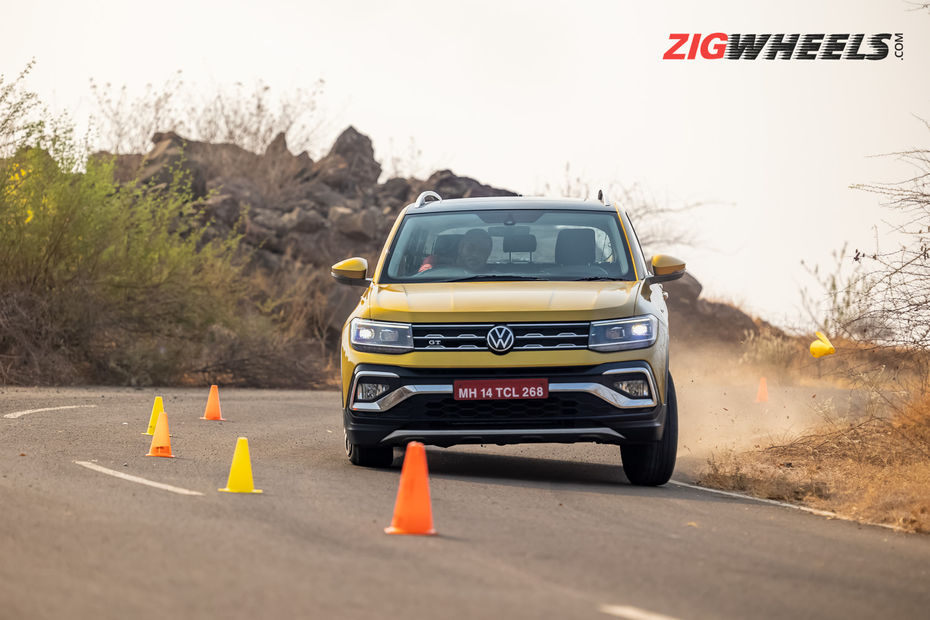
Let’s start with the most important test - the cornering test. Each of these cars is driven through a sharp corner at varying speeds to find out which one inspires maximum confidence. It must be noted that the Honda Elevate won this round the previous time we tested it with its rivals. So let’s find out if it still keep that top spot here:
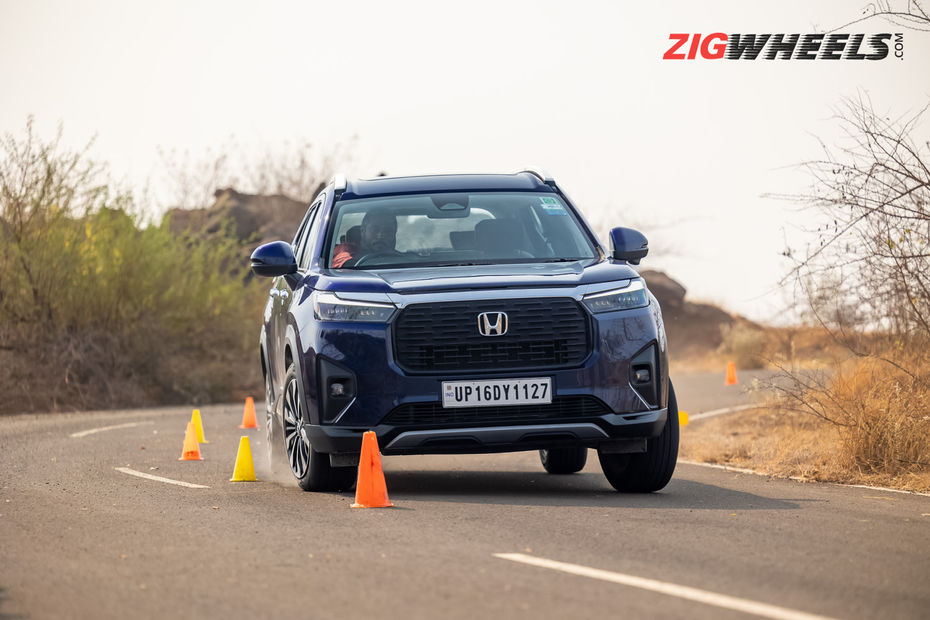
At 60kmph, all these SUVs go through the corner without hitting any cones. But the Seltos runs a bit wide, while the sensitive electronic stability control in the Hyryder kicks in and starts cutting power. The Creta feels much more comfortable than its sibling, the Seltos. However, it’s the Taigun and Elevate that offer maximum confidence at 60kmph.
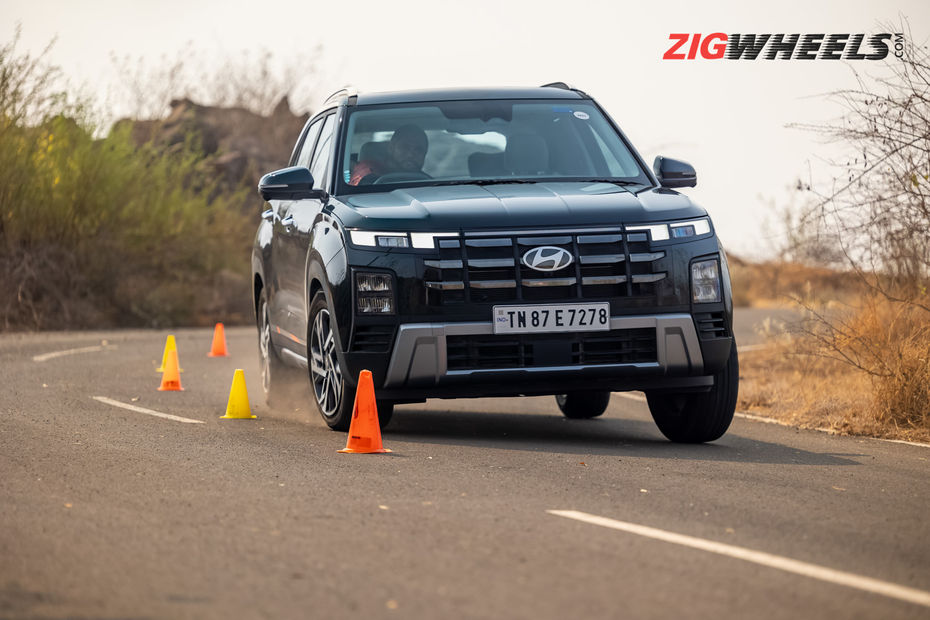
the automobile community
Taking things a notch up, at 65 kmph, the Honda Elevate is composed and feels the most confidence-inspiring of the lot. The Taigun, this time around, drifts and steps its tail out, but doesn’t hit the cone. The Creta and Seltos also start understeering and running wide, and the former starts to lose grip. And once again in the Hyryder, the ESC kicks in and cuts down the power.
That said, none of them hit the cone and it’s time to turn up the heat.
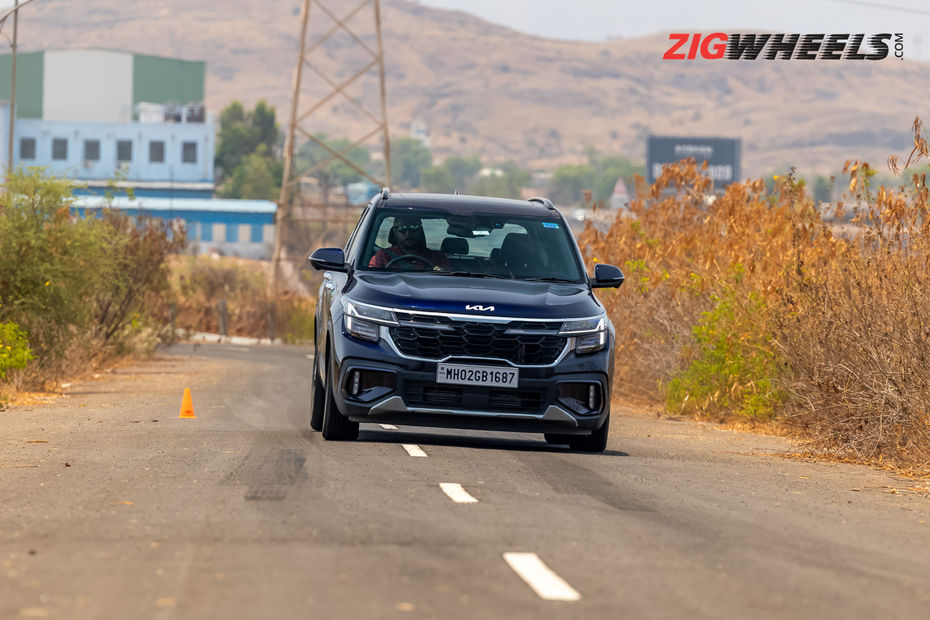
At 70kmph, the Hyryder, Seltos and Taigun start running wide and knock down two cones. It must be noted that the Hyryder’s run is interfered with by a really intrusive ESC, while the Seltos you feel less of a connection to the road. The Taigun felt composed, but like the Seltos it lacked steering feedback. Meanwhile, the Creta and Elevate knocked down just one cone, Both felt like a step up from the other cars and always stayed composed. But in our photo finish, the Creta turned in the tightest, beating the Honda Elevate by a smidge. So we have a new cornering test champion here!
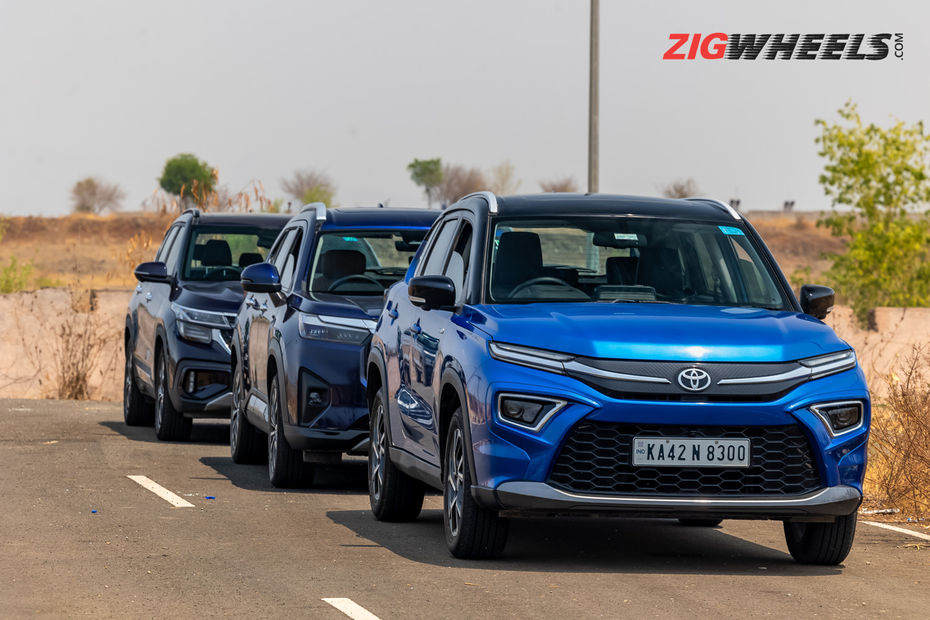
If you’re an avid ZigWheels reader, you will recall that this section would previously have been called the ‘Acceleration Test.’ But considering the sheer number of powertrains most of these cars offer, we have rebadged it to ‘Specifications And Performance.’
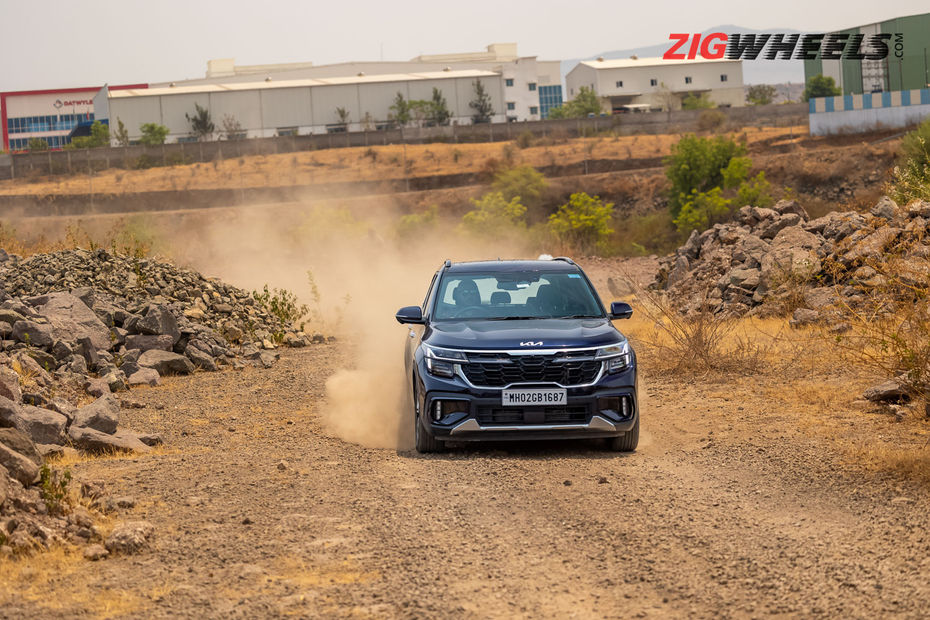
|
Parameters |
1.5-litre NA Petrol |
1.5-litre Turbo-petrol |
1.5-litre Diesel |
|
Engine |
1.5-litre naturally aspirated four-cylinder |
1.5-litre turbo-petrol four-cylinder |
1.5-litre four-cylinder turbo-diesel |
|
Power (PS) |
115 PS |
160 PS |
116 PS |
|
Torque (Nm) |
144 Nm |
253 Nm |
250 Nm |
|
Transmission Options |
6-speed MT / CVT |
6-speed iMT* / 7-speed DCT |
6-speed MT / 6-speed iMT* / 6-speed AT |
|
Creta 0-100 kmph (Real-world Test) |
13.36 seconds (CVT) |
Not Tested |
12.26 seconds (AT) |
|
Seltos 0-100 kmph (Real-world Test) |
Not Tested |
9.24 seconds (DCT) |
12.99 seconds (AT) |
*Limited to Kia Seltos
The Kia Seltos and Hyundai Creta offer a wide range of powertrain options, including a petrol, turbo-petrol, and a diesel.
Meanwhile, the Seltos offers the most amount of transmission options in this test, including an iMT (clutchless manual) with the diesel and turbo-petrol engines.
The 1.5-litre turbo-petrol engine is the most powerful in its segment and the Seltos Turbo is quicker than the Taigun 1.5-litre TSI.
It also must be noted that the Seltos and Creta are the only ones to offer a diesel engine in its segment.

|
Parameters |
Toyota Hyryder NA Petrol |
Toyota Hyryder CNG |
Toyota Hyryder Hybrid |
|
Engine |
1.5-litre naturally aspirated four-cylinder |
1.5-litre naturally aspirated four-cylinder |
1.5-litre naturally aspirated three-cylinder |
|
Power (PS) |
103 PS |
88 PS (in CNG mode) |
116 PS |
|
Torque (Nm) |
137 Nm |
121.5 Nm (in CNG mode) |
141 Nm |
|
Transmission Options |
5-speed MT / 6-speed AT |
5-speed MT |
e-CVT |
|
0-100 kmph (Real-world Test) |
13.99 seconds (MT AWD) / 15.13 seconds* (AT) |
Not Tested |
11.55 seconds* |
*Tested in Wet conditions
The Hyryder, on the other hand, also offers three powertrain options, including an NA petrol, a CNG, and a strong-hybrid.
All the three engines have the least amount of power here and focus more on efficiency.
That said, the Hyryder NA petrol gets an optional AWD system and a CNG powertrain, making it (and the Grand Vitara) the only model in this test to get these options.
The Hyryder hybrid posted a commendable 0-100 kmph time of 11.55 seconds.

|
Parameters |
Volkswagen Taigun 1-litre |
Volkswagen Taigun 1.5-litre |
|
Engine |
1-litre three-cylinder turbo-petrol |
1.5-litre three-cylinder turbo-petrol |
|
Power (PS) |
115 PS |
150 PS |
|
Torque (Nm) |
178 Nm |
250 Nm |
|
Transmission Options |
6-speed MT / 6-speed AT |
6-speed MT / 7-speed DCT |
|
0-100 kmph (Real-world Test) |
13.08 seconds (AT) |
8.89 seconds (MT) / 10.08 seconds (DSG) |
Tha Taigun offers you the choice of two turbo-petrol engines instead of its rivals, which get a NA petrol unit as its base option.
The 1-litre TSI petrol engine, when compared to its rivals’ NA petrol option, has the most torque.
It must also be noted that the Taigun 1.5-litre TSI, paired with the manual transmission, is the quickest accelerating SUV we have tested till date.
That said, the same engine paired with the DCT can’t match the Seltos DCT’s time in our acceleration test.
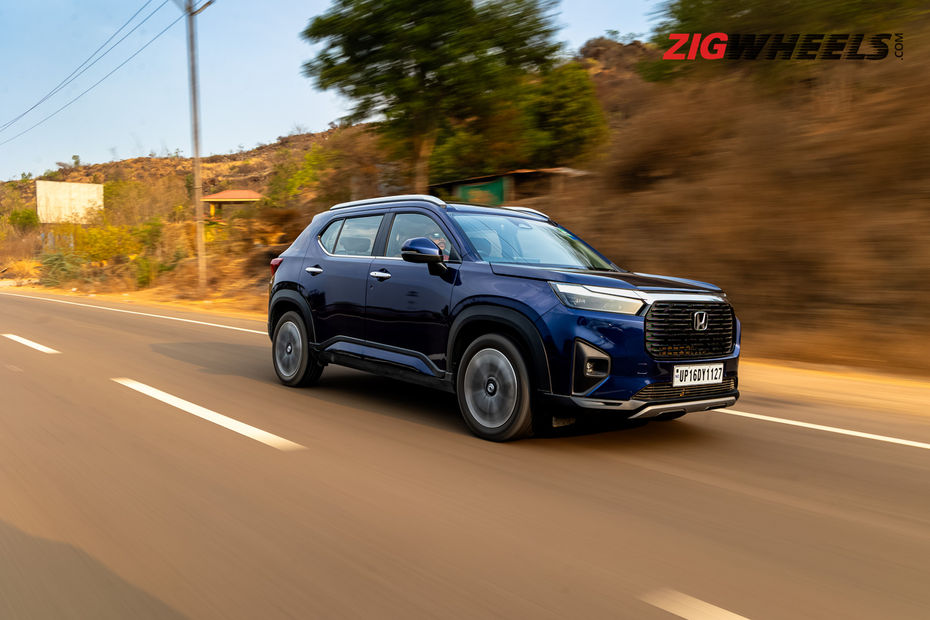
|
Parameters |
Honda Elevate |
|
Engine |
1.5-litre naturally aspirated four-cylinder |
|
Power (PS) |
121 PS |
|
Torque (Nm) |
145 Nm |
|
Transmission Options |
5-speed MT / CVT |
|
0-100 kmph (Real-world Test) |
12.35 seconds (CVT) |
The Honda Elevate offers just one engine option: a 1.5-litre naturally aspirated petrol engine.
It’s the most powerful NA petrol engine here.
In our 0-100 kmph test, the Elevate CVT did it in 12.25 seconds, around 1 second quicker than Creta CVT.
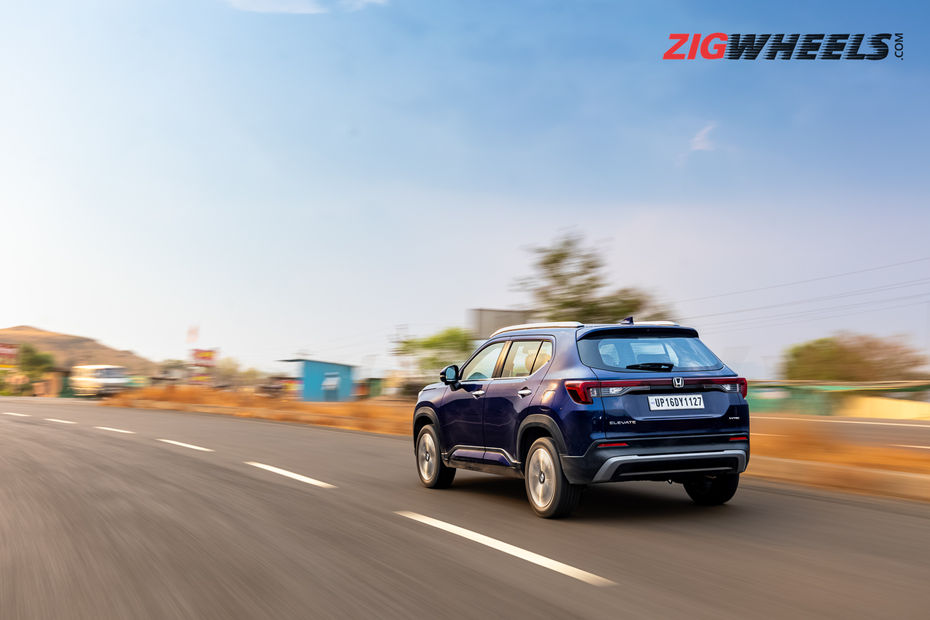
Whoa! The margins were really close in this department, but it was the Honda Elevate that had the shortest stopping distance here, despite having rear drum brakes. The Creta and Seltos, despite having all-wheel disc brakes, take second and third place, respectively. And coming up fourth is the VW Taigun. The Hyryder is the slowest car to come to a stop.
|
Braking Test |
|||||
|
Specifications |
Kia Seltos |
Honda Elevate |
Volkswagen Taigun |
Toyota Hyryder |
Hyundai Creta |
|
100-0 kmph |
39.67 metres |
37.98 metres |
40.17 metres |
40.58 metres |
38.12 metres |
|
80-0 kmph |
23.92 metres |
23.90 metres |
25.00 metres |
25.82 metres |
24.10 metres |
|
Braking Hardware (Front / Rear) |
All-wheel disc brakes |
Disc / Drum |
Disc / Drum |
All-wheel disc brakes |
All-wheel disc brakes |
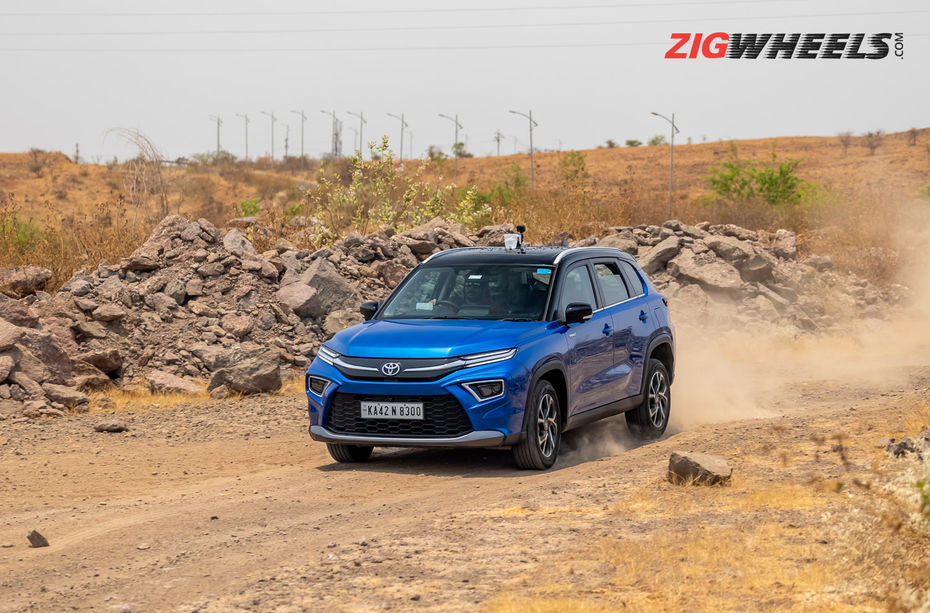
Trivia: We fill a 700 ml mug full of water and place it on the roof to see which car spills the least amount of water when driven over a rough patch of road. The one with the most amount of remaining water wins this test.
|
Model |
Water Remaining |
|
Kia Seltos |
275 ml / 700 ml |
|
Hyundai Creta |
275 ml / 700 ml |
|
Honda Elevate |
250 ml / 700 ml |
|
Volkswagen Taigun |
210 ml / 700 ml |
|
Toyota Hyryder |
200 ml / 700 ml |
From the above table, it’s evident that the Kia Seltos and Hyundai Creta spilled the least amount of water in this test. The Honda Elevate takes second spot here with 250ml of remaining water. All three cars feel more at ease here when the going starts to get tough, thanks to their suspension set up, which can take more beating.
On the other hand, the Taigun and Hyryder felt more out of their comfort zone in the rough roads with more body movement. As a result, they come fourth and fifth, respectively.
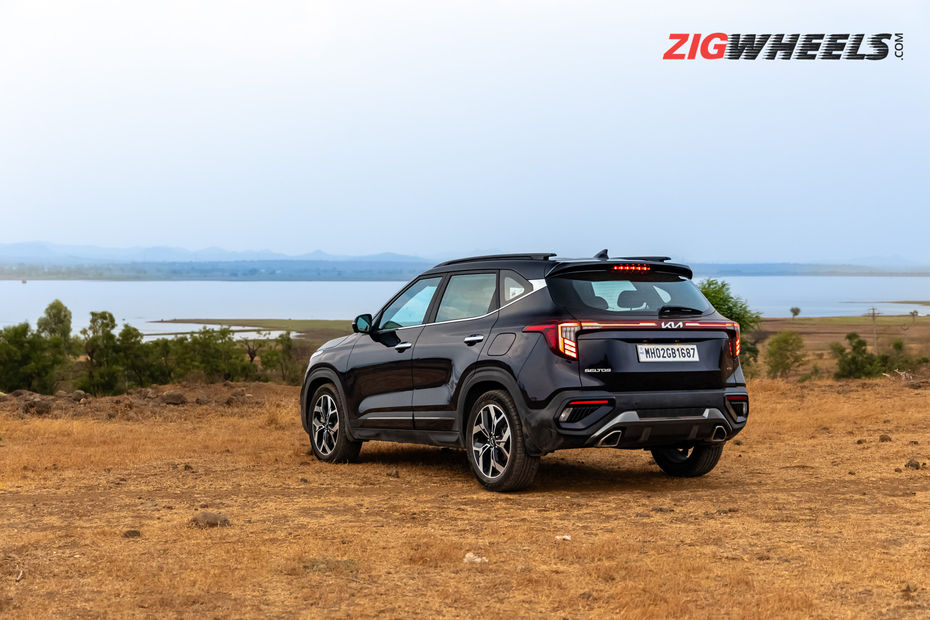
Out on the open road, if you want a comfortable ride, then it’s the Honda Elevate, Kia Seltos, and Hyundai Creta that you should consider. All these three cars feel more at ease when compared to the Taigun and Hyryder when the going gets tough.
The Seltos’ slightly stiffer suspension setup offers a balance between sporty and comfortable. Handling also feels reassuring, especially when pushing it through a set of corners. The Hyundai Creta also feels very similar to the Seltos, but its slightly softer suspension setup makes it offer a tad more comfortable ride.
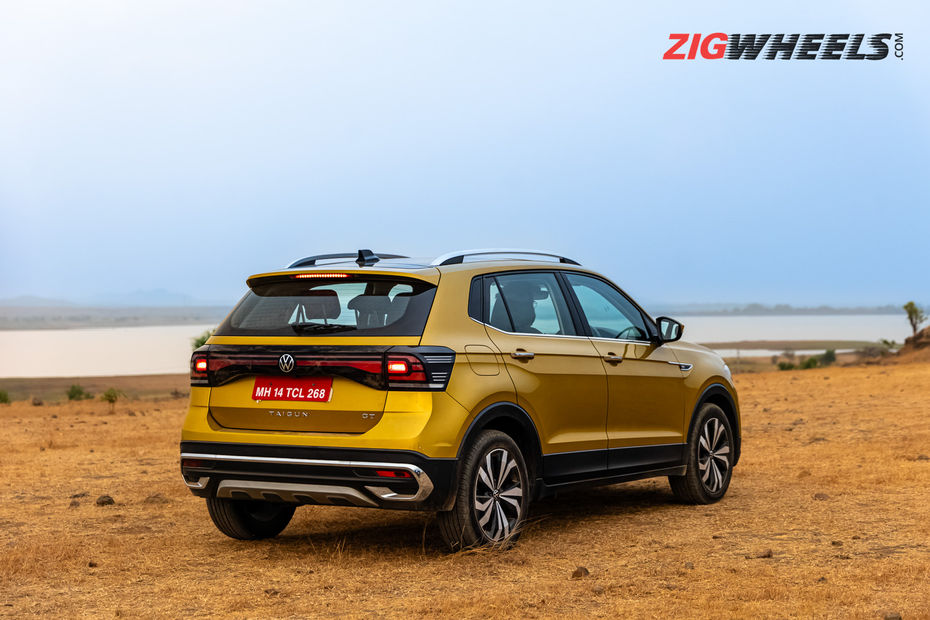
Meanwhile, the Honda Elevate, with its softer suspension setup, is a more comfortable riding car than the Seltos, especially at slower speeds. But the negative side of this setup is that it tends to have a little more movement over undulations, but not to the point of feeling uncomfortable.
The Volkswagen Taigun and Toyota Hyryder also have a comfortable ride when driving over smooth city roads. Even on the highways, both these cars feel evenly matched to the other three cars here. But these two start losing points when the going gets tough as they feel unsettled over bad roads compared to the other three.
|
Hyundai Creta Facelift |
Kia Seltos |
Honda Elevate |
VW Taigun |
Toyota Hyryder |
|
|
Ex-showroom Price |
Rs 11 lakh to Rs 20.15 lakh |
Rs 10.90 lakh to Rs 20.35 lakh |
Rs 11.69 lakh to Rs 16.51 lakh |
Rs 11.70 lakh to Rs 20 lakh |
Rs 11.14 lakh to Rs 20.19 lakh |
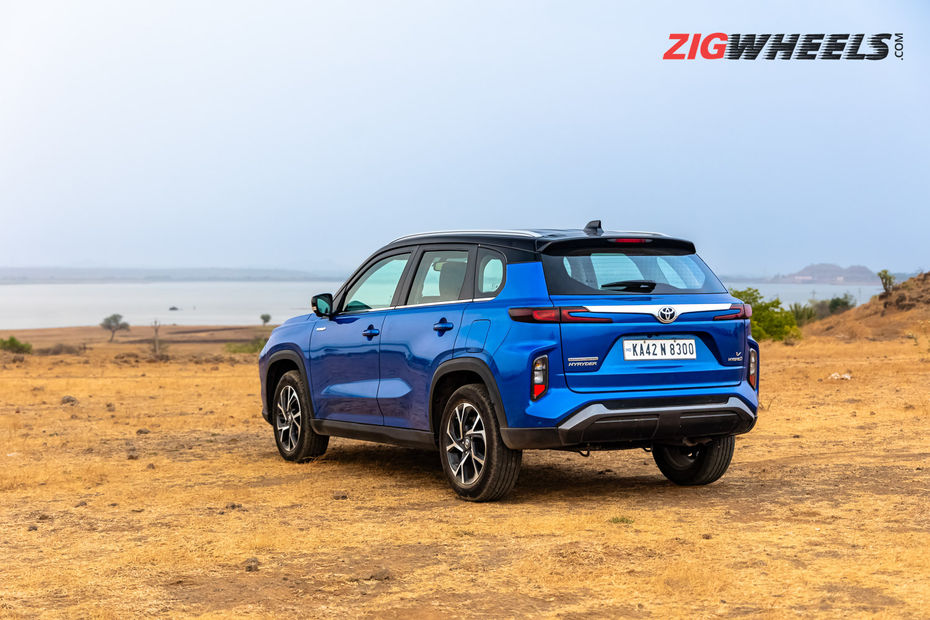
In the confines of this test, it’s the Hyryder that comes in last. It had a really intrusive ESC kicking in while cornering, was the slowest to come to a halt in our braking test and spilled the most amount of water in our rough road test. Brownie points, though, come in the form of it being the only one to offer a hybrid, CNG and even an all-wheel-drive option.
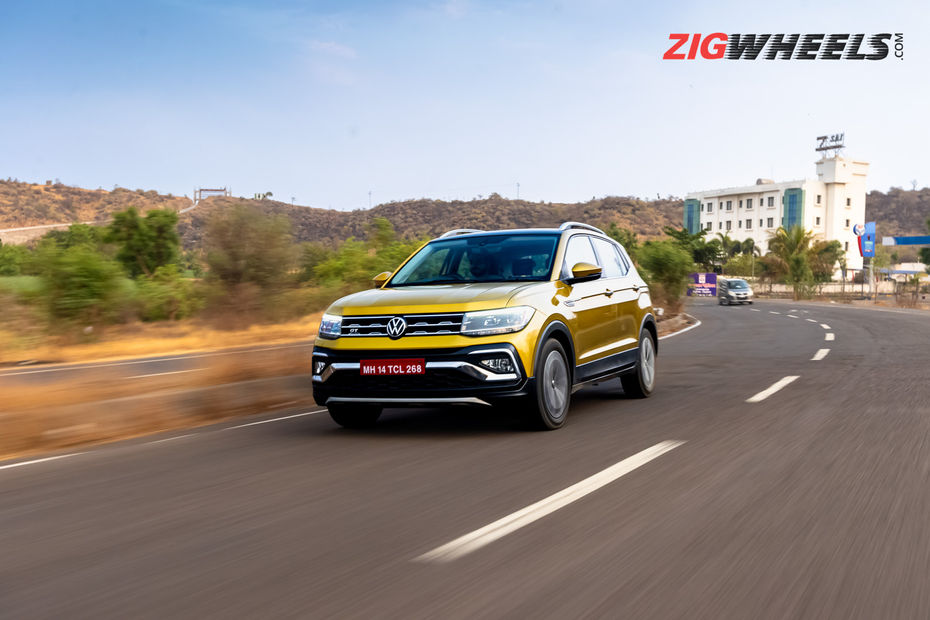
Up next, taking fourth spot is the Taigun. Yes, its turbo-petrol engines offer plenty of punch and it feels the sportiest to drive of the lot. But it lags behind in ride quality and braking.
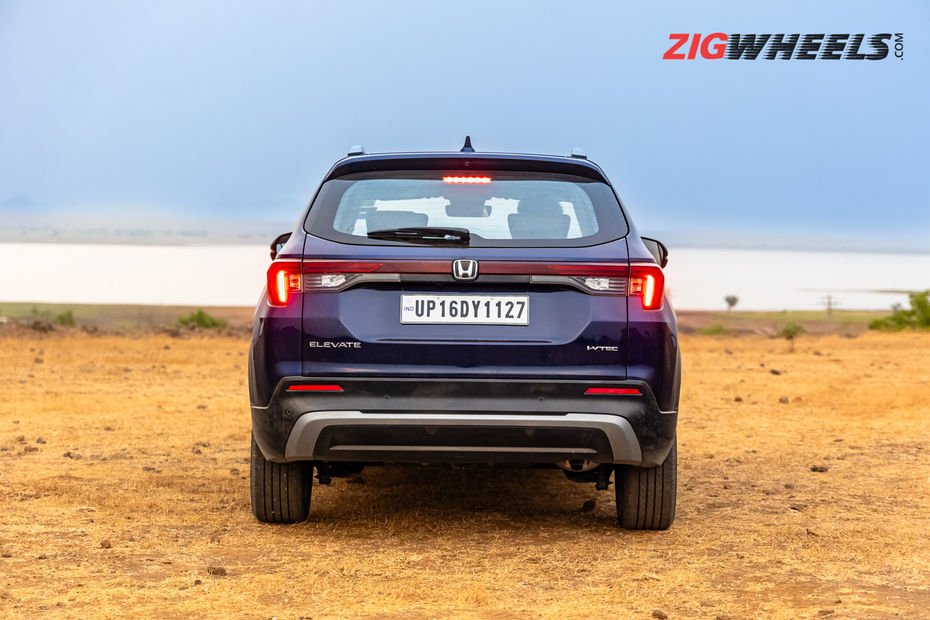
Taking third place is the Honda Elevate. It feels very composed in our cornering test and even has the best braking performance of the lot. That said, what lets it down is its engine, which we wish offered a bit more punch. Also, the Honda Elevate couldn’t beat the Seltos and Creta in our rough road challenge, making it lose a bit more valuable points.
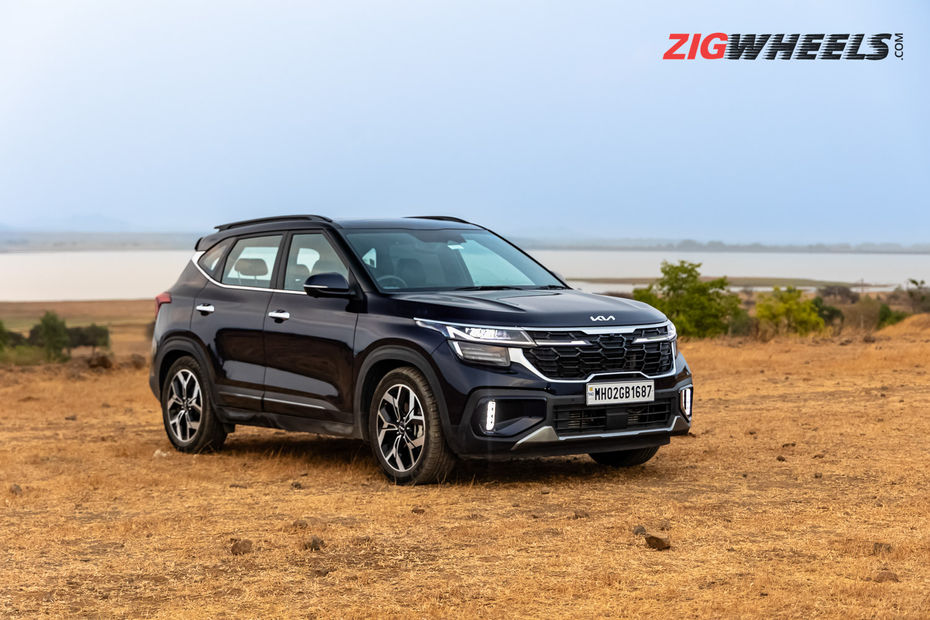
The Kia Seltos is now the runner-up of this test. It offers plenty of choice when it comes to powertrains and is right up there with the best when it comes to rough road tests. Even the ride and handling offers the perfect balance between sporty and comfortable. What let it down here was the cornering performance, which just wasn’t its forte.
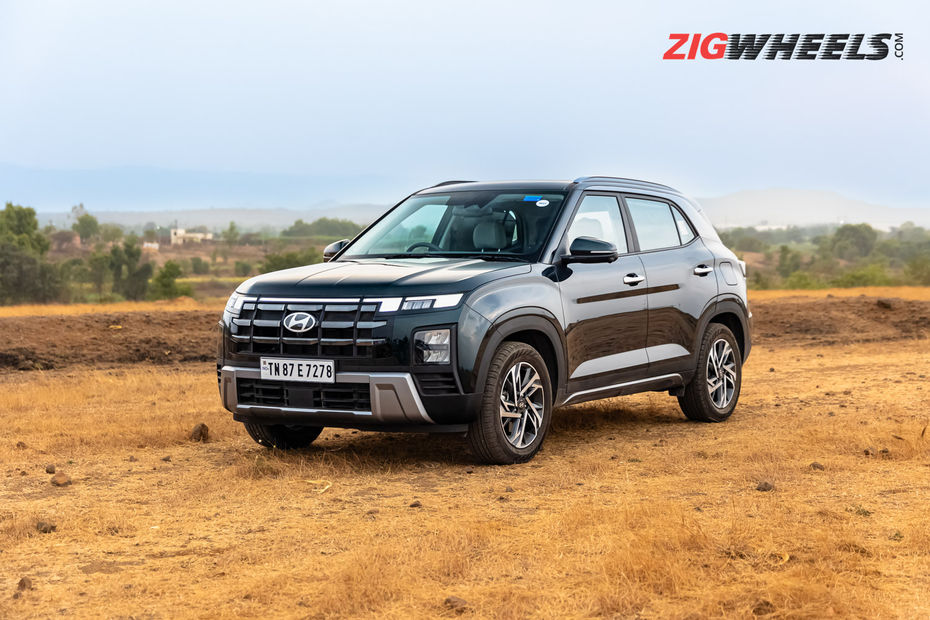
This brings us to the 2024 Hyundai Creta facelift, which takes the prize in this test. It knocked down just one cone, performed the best in our rough road test and braking performance was right up there with the best. The Creta, like the Seltos, also offers you a handful of powertrain options to choose from.
All in all, the best-seller becomes the best in our ride and handling test.


Maruti Brezza Vs Hyundai Venue Vs Tata Nexon – Ride And Handling

2022 Maruti Suzuki Brezza First Drive Review: Pricier! Techier!...

Kia Seltos 2023 Facelift: Good Made Better!

Toyota Hyryder Hybrid Review: Making Sensible Attractive?

2024 Hyundai Alcazar Review: Cretaaaaa!

2023 Tata Nexon: Punching Above!

2024 Kia Sonet Review: The Ideal SUV For The Small Family?

Mahindra BE 6e First Drive Review: Pure Insanity!

Creta vs Elevate vs Seltos vs Hyryder vs Taigun | Handling,...

Thar Roxx vs Creta vs Jimny | Handling, Performance & Ride Compared |...
 Maruti Brezza
Maruti Brezza
 Kia Seltos
Kia Seltos
 Toyota Urban Cruiser Hyryder
Toyota Urban Cruiser Hyryder
 Hyundai Alcazar
Hyundai Alcazar
 Tata Nexon
Tata Nexon
India's largest automotive community
 Here Are Some Adrenaline Pumping Experiences From Auto Expo 2025 That You Should Not Miss!
Here Are Some Adrenaline Pumping Experiences From Auto Expo 2025 That You Should Not Miss!
 All You Need To Know About The Surprise Element At Auto Expo 2025: BMW iX1 LWB
All You Need To Know About The Surprise Element At Auto Expo 2025: BMW iX1 LWB
 Hyundai Creta Electric Reaches Dealerships, Here’s A List Of Its Pros And Cons Before You Check It Out!
Hyundai Creta Electric Reaches Dealerships, Here’s A List Of Its Pros And Cons Before You Check It Out!
 MG Showcases A PHEV At Auto Expo 2025: The MG HS PHEV
MG Showcases A PHEV At Auto Expo 2025: The MG HS PHEV
 Hyundai Venue
Rs. 7.94 Lakh
Hyundai Venue
Rs. 7.94 Lakh
 Hyundai Verna
Rs. 11.07 Lakh
Hyundai Verna
Rs. 11.07 Lakh
 Hyundai i20
Rs. 7.04 Lakh
Hyundai i20
Rs. 7.04 Lakh
 Hyundai Creta Electric
Rs. 17.99 Lakh
Hyundai Creta Electric
Rs. 17.99 Lakh
 Hyundai Exter
Rs. 5.99 Lakh
Hyundai Exter
Rs. 5.99 Lakh
 Hyundai Creta
Rs. 11.10 Lakh
Hyundai Creta
Rs. 11.10 Lakh
 Tata Punch
Rs. 5.99 Lakh
Tata Punch
Rs. 5.99 Lakh
 Mahindra Thar ROXX
Rs. 12.99 Lakh
Mahindra Thar ROXX
Rs. 12.99 Lakh
 Tata Nexon
Rs. 7.99 Lakh
Tata Nexon
Rs. 7.99 Lakh
 Mahindra XUV700
Rs. 13.99 Lakh
Mahindra XUV700
Rs. 13.99 Lakh
 Hyundai Creta Electric: Sensible, Not Sensational
Hyundai Creta Electric: Sensible, Not Sensational
 Mahindra XEV 9e First Drive Review
Mahindra XEV 9e First Drive Review
 2024 Honda Amaze Review: Predictable Is Good
2024 Honda Amaze Review: Predictable Is Good